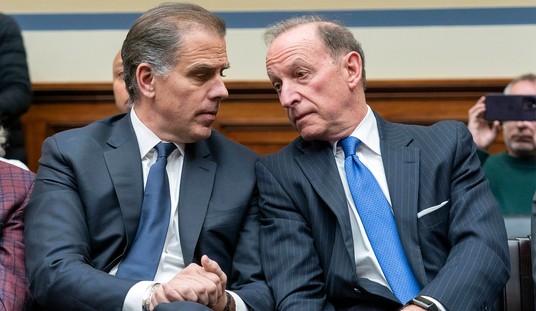Advertisement
The Affordable Care Act is based on the belief that our current system of health care is a mess and only the government can fix it efficiently. This unfortunate assumption will do nothing but entrench government even deeper into the daily lives of Americans. We can see this clearly in the Act’s individual mandate – the requirement that every American purchase health insurance or pay a fine.
There are plenty of alternative reforms that would improve our system without expanding government. Of course, many of them would depend on individuals, hospitals, doctors, and even insurance companies recognizing the need for change and taking action themselves. Tort reform or interstate insurance competition (the two common Republican suggestions) won’t be enough, and tax credits won’t solve the underlying problems. Without real changes, big government will inevitably step in to “fix” the system. The skyrocketing costs of health care demand change.
So, what are these “real” alternatives? Here are a few possibilities:
Attempting to buy individual insurance is an exhausting, painstaking, often exorbitantly-expensive endeavor. This is “solved” by buying insurance as part of a group. The group spreads out the risk, lowering the average premium cost. The trouble is, these group plans are typically run through employers. With our current high unemployment and increasing diversity of job types (independent contractors, a myriad of part-time jobs, etc.), it is increasingly difficult to make sure people receive their insurance through their employers.
Recommended
Advertisement
The answer lies in group plans that are not purchased through an employer. Nonprofit private collaborations can function in the same way, and these can be “bought into” by individuals. These already exist in limited fashion (often through trade associations or unions), and they should be expanded. Groups could be defined geographically, through larger categorical trade associations, through church denominations, etc. You could remain in your “group” regardless of job changes, and employers could simply increase your salary or contribute designated funds to your personal premiums. Such collaborations would make health insurance affordable for many, and they would massively reduce the number of people who suffer gaps in coverage (which lead to preexisting conditions exclusions) while moving from one job to another.
For the poor or extremely sick, their groups could be subsidized by charitable giving. Getting churches and private charities involved in American health care is the only way to cover the costs of health care without the government stepping in. There will always be people who cannot cover their medical costs – why not help them through charity rather than forcing hospitals or doctors to “eat it,” which merely raises the costs on everyone?
Of course, these suggestions won’t really solve the problem. The only way to make health care truly affordable is to reduce the overall costs. And the best way to reduce costs is through competition. But costs in the medical field are incredibly opaque. Try finding out from your hospital or insurance company what it costs for a given procedure. It took several phone calls to both before I could get even the roughest idea of what I should expect to pay for a normal (no complications) pregnancy and birth. The costs are buried beneath layers of billing codes, negotiated rates, varying coinsurance percentages, post-claims underwriting, pre-existing conditions exclusions… the list goes on and on.
Advertisement
How about this for an alternative: Clear, published cash rates for most basic procedures. JCPenny has been running a slew of new tv spots, advertising their new simplified image. Abandoning their complex system of clearance, discounts, sales, super sales, and doorbusters, the rebranded “JCP” is simply going to price their items clearly: $5, $10, $13. The medical system would do well to take a cue from this.
I realize that some costs are not so simple. You can’t, for instance, say that “having a baby” costs $3000. There are a variety of different situations that can arise. What you can do, is say that an ultrasound will cost $X, an office visit will cost $Y, a certain set of blood tests will cost $Z. Then make these prices clear. Post them online; have a menu of services at an office. When customers see what they are paying for, they can make educated decisions. Would you go to buy a burger with fingers crossed, hoping that some third party will cover most of your costs and hit you with only a small coinsurnace fee? Of course not.
We are seeing some of this now. Quick care clinics are becoming increasingly common. Many are run by health care networks. They are often found in drug stores, big retail chains, or small local offices. They offer basic services for cash. Need a test for strep throat so you can get the antibiotic? $50. Need a flu shot? $25. There is no reason to involve complex paperwork or third party insurance in this kind of transaction. It is simple, straightforward, and often doesn’t even require the presence of a doctor. This is a much-needed move in the right direction.
Advertisement
Why can’t this approach be applied to more parts of the system? Why can’t your primary care doctor give you a menu of his basic procedures with prices? Why can’t we have testing centers that list all of their services with rates on their websites? Then you could comparison shop between various providers of CT Scans or EEGs and pick the one you want. I recognize that not everything could be laid out so clearly, but surely we can improve on the current situation.
Burdens on our doctors can be relieved by expanding collaborations. Rather than having the family doctor bear the full brunt of all of his own malpractice insurance costs, have a medical partnership between hospitals, doctors, testing centers, and specialists shoulder that burden together – reducing the risk for everyone. These collaborations can also grease the skids for transferring a patient (and their information) from one doctor to another.
Individual doctors then also have the ability to pass along duties like billing to a more centralized office and instead get paid a salary, reducing the possible incentive to run needless procedures in order to make more money. Any centralization carries its own set of risks (increased potential for internal bureaucracy, etc.), but some form of collaboration could free up the small family care practitioner.
Additional money can be saved with the digitization of medical records. My primary care doctor can access the results of my CT Scan at the testing center right from his computer. When I move to a new state, I can simply have my information sent over to my new doctor. Digitization increases speed, improves accuracy, and reduces duplication.
Advertisement
These changes can be advanced by individuals and doctors, but their efforts alone are unlikely to affect complete change. Insurance companies and governments must recognize the unsustainable trajectory of the current arrangement. They must work to reform their own approaches. These steps will be discussed in my next article.

























Join the conversation as a VIP Member